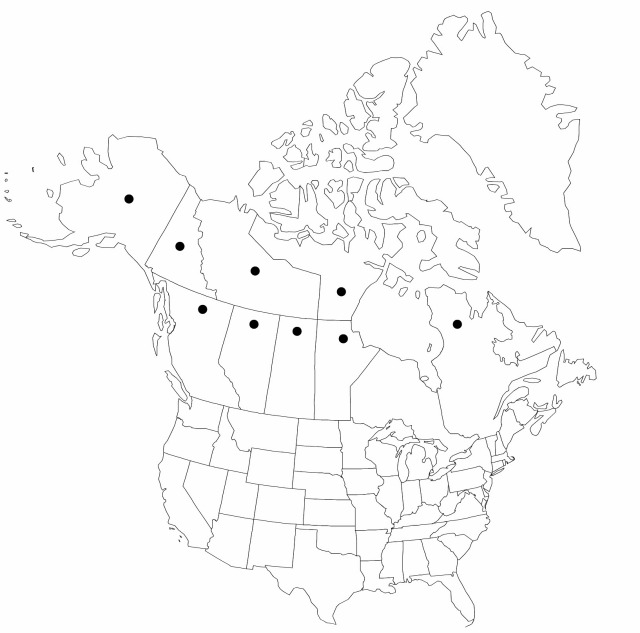Difference between revisions of "Carex lapponica"
Linnaea 24: 539. 1851.
FNA>Volume Importer |
FNA>Volume Importer |
Revision as of 19:09, 24 September 2019
Plants densely cespitose, in small clumps; rhizomes short. Culms erect, relatively strict, 15–40 cm. Leaves: sheaths relatively tight, pale brown abaxially, inner band thin, hyaline, concave at summit; ligules as wide as long; blades pale green to gray-green, flat, 10–20 cm × 1–2 mm, subequal to or shorter than culms, papillose, densely so abaxially. Inflorescences 1.5–4 cm × 4–5 mm; proximal bracts shorter than to exceeding spikes, distal bracts usually scalelike. Spikes 3–6(–7), gynecandrous, proximal sometimes remote, distal approximate, containing 10–20 perigynia, suborbicular to ovoid, 3–7 × 3–5 mm; terminal spike staminate for 1/2 length, not or scarely clavate. Pistillate scales hyaline with green, 3-veined center when young, usually brownish tinged in age, broadly ovate, subequal to, not concealing perigynia, apex obtuse to acutish. Perigynia appressed-ascending, gray-green, becoming pale brown in age, obscurely many-veined on both faces, elliptic-ovate, 1.8–2.1 × 1–1.3 mm, widest near middle, membranous; beak short, entire. Achenes yellowish brown, oblong-obovate, 1.25 × 1 mm, dull to slightly glossy. 2n = 56.
Phenology: Fruiting early summer.
Habitat: Sphagnum bogs, wet, nutrient-poor areas, mostly lowlands
Elevation: 0–200 m
Distribution

Alta., B.C., Man., N.W.T., Que., Sask., Yukon, Alaska, n Eurasia.
Discussion
Carex lapponica is probably an often overlooked species in the flora area.
Selected References
None.
